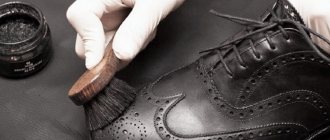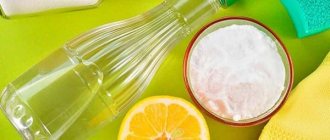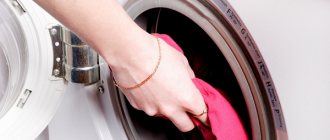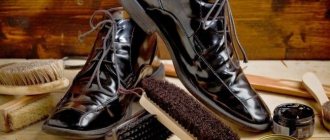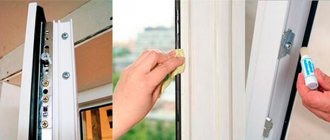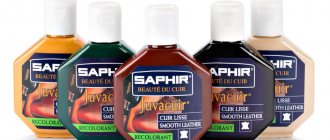Carpet is a covering that many people love for its obvious advantages: inexpensive price, a huge variety of textures and colors, ease of installation.
Today, carpet can be found in a variety of rooms, both residential and office. In apartments, carpet is most often laid in children's rooms and bedrooms. If you have also chosen this flooring option for your home, it will be very useful for you to learn how to care for carpet in order to preserve its quality and appearance for as long as possible.
The downside of carpet is its ability to absorb dirt and attract dust. However, regular proper cleaning and the use of simple effective cleaning techniques will allow you to enjoy your carpet for 5-15 years.
When purchasing carpet
You must be aware of what awaits you after purchasing this or that product. Types of carpet are very different, so their care also differs significantly. So, buying carpet
- choose the coating correctly in accordance with the operating instructions. For example, a coating that is sensitive to moisture will not last you long if you lay it in the hallway
- be sure to talk to a consultant about care; let them tell you what are the features of caring for a particular carpet
- familiarize yourself with the manufacturers' recommendations for the operation of the selected coating
General Tips
- To prevent dirt from street shoes from getting into your living rooms, place a rug in the hallway next to the front door.
- Try to remove stains immediately after they appear, without waiting until they are deeply absorbed into the material. Remember that old stains are much more difficult to remove than fresh ones.
- Do not use a broom or brush to clean carpet - it is ineffective. In this case, the main assistant for maintaining cleanliness will be a vacuum cleaner.
- Before using chemicals on the entire surface of the carpet, test them first on an inconspicuous small area, such as a corner.
Pile restoration
Often the pile on the carpet deteriorates locally or is completely removed. You can try to repair such serious damage yourself by performing simple carpet repairs.
Carpet patch
Restoration of fallen lint is carried out using gel glue. The work is done like this:
- The resulting bald spot is completely cleaned of any remaining lint. To facilitate the procedure, the base can be moistened with gasoline (but not acetone).
- Then you will have to determine the place that will become the “donor” of new fibers. This could be an area under some furniture. From there it is necessary to pull out a bunch of new fibers.
- All that remains is to coat the problem area with glue and fill it with new pile.
- After the glue has dried, the pile is combed with a stiff brush to mix new fibers along the contour with the rest of the pile. If the new fibers are higher than the rest, they can be trimmed.
If the owner is faced with the task of repairing a hole in the carpet in an apartment, it is necessary to use patches:
- To begin with, select a template that will cover the area of the hole. This could be a tin can, saucer, etc.
- Then determine the location from which the patch can be cut. It’s good if there are scraps of material left after installation.
- Then, according to the template, an even hole is cut out in the problem area, and a patch is made from the material. It will fit perfectly into the shape of the hole. If the material is textured or has a pattern, it is necessary to select a similar area for the patch (fortunately, the pattern is repeated in carpet).
- At the end, all that remains is to coat the area with glue and insert the patch. While it dries, it is pressed down with a heavy book.
The pile is combed with a brush and trimmed if necessary.
Average score of ratings is more than 0
Share link
Comments There are no comments yet, but you could be the first...
Regular carpet cleaning
To properly care for carpet, you need to take into account the characteristics of the material.
Natural pile carpet
- This product needs to be vacuumed 2-3 times a week.
- For natural carpet, a good solution would be to clean it with a special electric carpet brush. Its peculiarity is that when rotated, it separates the glued fibers - this allows you to effectively remove dirt and debris stuck between them.
- It is not advisable to use a washing vacuum cleaner to clean natural carpet, since moisture is retained in the fibers, resulting in a favorable environment for mold to appear. Wet cleaning of carpet will result in an unpleasant musty, damp smell.
- Once a month it is recommended to carry out dry deep cleaning using special powders. This powder consists of special micro sponges that can efficiently absorb dirt. When the powder finishes its “work”, it changes color, after which it is removed with a vacuum cleaner.
- You can refresh the color of your carpet and bring back the vibrancy of the colors with a simple trick. Simply brush the coating with a solution of ammonia (for 1 liter of water you need 3 tablespoons of ammonia).
Synthetic carpet
- Here, too, your main assistant will be a vacuum cleaner, but unlike natural materials, you can also use a washing vacuum cleaner for artificial ones. The main condition is the high-quality removal of all excess moisture after such cleaning. Over time, water erodes the dirt-repellent impregnation with which the carpet is treated, and it loses its original protective properties.
- Do not think that synthetic fibers will prevent the development of microbes in the carpet. As the coating is used, debris, food crumbs, animal hair and dust still accumulate in it - this creates an environment for the proliferation of bacteria. Therefore, keeping artificial hair clean is also of great importance for your health.
Types of carpets and their features
The structure of the carpet consists of a base, a protective layer and a face pile. The composition and type of base have a great influence on the thermal insulation and sound insulation qualities of the floor covering. The carpet cleaner is selected taking into account the characteristics of its base. The base is made of the following materials:
- Felt. Artificial or natural felt is used for production. It is allowed to use wet cleaning for this type of floor covering.
- Foamed latex. It can be cleaned by wet cleaning using special cleaning products.
- Textile. Removal of contaminants is carried out using methods that are selected taking into account the composition of the threads: natural or synthetic.
- Jute. A natural material that does not tolerate moisture well. It is not allowed to clean the jute base using wet cleaning.
- Rubber. Synthetic material, resistant to all types of cleaning. The main disadvantage is the long drying time after contact with moisture.
Elimination of unpleasant odors
- First of all, you need to let the carpet rest for at least a week before installing it. This is done to get rid of the unpleasant odor that freshly laid carpet may have.
- To eliminate the musty smell, use products designed to combat mold. As a rule, damp places are treated, which are the source of the odor. After using special products, it is recommended to carry out a steam cleaning or disinfection procedure using an ultraviolet or quartz lamp.
- Ammonia smell. Owners of cats and dogs are familiar with this problem. To remove the smell of cat marks, it is recommended to treat the stain with a 3% peroxide solution, then blot it with a dry cloth.
- Baking soda helps to effectively eliminate many odors that may appear during flooring. You just need to rub it into the pile, leave it for several hours, and then rinse first with vinegar and then with water. The treated area must be thoroughly dried.
- There are also special products on sale designed to combat unpleasant odors. Be sure to read the instructions and check if it can be used in your case.
Other contaminants
This method can be used to also output:
- rust;
- food coloring;
- sauce;
- shoe polish;
- blood;
- paint.
- Treat with detergent.
- We soak it with a napkin and treat it with ammonia, and soak it again.
- Wipe with detergent and water.
- We soak it dry several times with a napkin.
After the stain removal procedure, it is advisable to take the carpet outside, where the odors from the products used will quickly disappear, in addition, the coating will dry out.
Removing stains from carpet
- Remember that the sooner you start cleaning the stain, the more likely it is that you will be able to remove it without leaving a trace .
- Use special stain removers for carpet (but it is advisable to purchase them in advance, so that if a stain appears, you will already have it on hand). The product is not applied directly to the stain, but to a paper towel or white napkin (colored napkins cannot be used, as the paint from the napkin will remain on the carpet). The stain must be treated gradually from the edges to the center.
- To remove thick substances from carpet, such as cream, you can use a tablespoon. Move it towards the center of the stain, gradually removing the substance. After this, use a cloth or sponge soaked in the appropriate solution.
- A vinegar solution (1 teaspoon of vinegar per 1 liter of water) is effective for removing fresh stains from wine, coffee, juice, tea, beer, lemonade, or berries.
- If the stains are old, then you need to apply glycerin to them and leave overnight, then clean the stain with a thick soap solution.
- Stains from cheese, mayonnaise, ketchup, milk, chocolate and toothpaste are removed with detergent, then soaked with a napkin or paper towel with ammonia.
- Drops of wax or paraffin can be easily removed by laying a cloth over them and running an iron over it. The substance will melt and be absorbed into the fabric.
- To remove chewing gum from carpet, you need to first freeze it. To do this, place an ice pack on it (make sure that the bag does not leak and the carpet does not get wet). Once the gum freezes, you can chip or remove it.
- It is better to leave street dirt until it spills out, and then vacuum the carpet.
Taking good care of carpet and proper care will help you take advantage of all the benefits of this coating and take care of the cleanliness of your home, as well as the health of those around you.
If you cannot remove any stains or other types of dirt on your own, you can always turn to a cleaning company for help. Professional equipment and special products will extend the life of your favorite coating.
Folk remedies
Folk remedies used for regular care of long-pile carpets at home, as well as for removing stains and other contaminants from their surface, are in many cases no less effective than specialized cleaning compounds. By correctly using such products, which are always available to almost every housewife, you can maintain the attractive appearance of a long-pile carpet without serious financial costs.
The most popular folk remedies used to care for long-pile carpets and clean their surface and structure from stains, accumulated dust and dirt are:
- Table vinegar or acetic acid is used to clean carpets from stains and dirt of various types.
- Ammonia is a product used to remove stains from long-pile carpets.
- Baking soda is an effective stain remover.
- Finely ground table salt - general carpet care and stain removal.
- Washing powder - maintaining the appearance of fluffy coverings and ridding their surface of stains.
- Dishwashing detergent is a budget alternative to using special detergents.
- Laundry soap - stain removal, general carpet care.
- Used tea leaves, sawdust, sauerkraut are the means by which the long pile of carpet and the space between its piles are cleaned of dust and small debris.
The choice of each of the above products, their combination and method of application is made depending on the nature of the contamination present on the surface of the carpet and between its villi.

